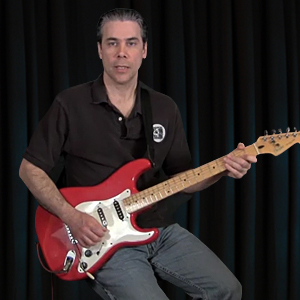- Introduction
- Diminished 7th E String Root
- Diminished 7th Chord E String Root Play Along
- Diminished 7th A String Root
- Diminished 7th A String Root Play Along
- Diminished 7th D String Root
- Diminished 7th D String Root Play Along
- Minor 7th Flat 5th E String Root
- Minor 7th Flat 5th E String Root Play Along
- Minor 7th Flat 5th A String Root
- Minor 7th Flat 5th A String Root Play Along
- Minor 7th Flat 5th D String Root
- Minor 7th Flat 5th D String Root Play Along
- Dominant 7th Flat 5th E String Root
- Dominant 7th Flat 5th E String Root Play Along
- Dominant 7th Flat 5th A String Root
- Dominant 7th Flat 5th A String Root Play Along
- Dominant 7th Flat 5th D String Root
- Dominant 7th Flat 5th D String Root Play Along
- Minor Major 7th E String Root
- Minor Major 7th E String Root Play Along
- Minor Major 7th A String Root
- Minor Major 7th Chord A String Root Play Along
- Minor Major 7th Chord D String Root
- Minor Major 7th Chord D String Root Play Along
- Conclusion
Introduction
This tutorial is about extended harmony chords, covering types of 7th chords beyond dominant 7ths, major 7ths and minor 7ths. This tutorial assumes you already know and can play those more basic 7th chord forms and shapes. They can be found in these tutorials.
Introduction to Dominant 7th Chords
Introduction to Movable Dominant 7th Chords
Introduction To Major 7th Chords
Introduction To Minor 7th Chords
Practicing Major & Minor 7th Chords
We will extend the concept of triadic harmony to include: diminished 7ths, dominant 7th/flat 5th, minor 7th/flat5th, and minor/major 7th chords. We will learn how to play these as chord shapes rooted on the E, A and D strings. Then we will play them in a jazzy chord progression with a backing track. We'll use the 7th chords learned in the previous tutorials.
It is of course important to know how to play these chords. It is also important to understand how and why they are different. Let's review the theory behind the construction of these chords.
Dominant 7th Chords contain:
Major 7th Chords contain:
Minor 7th Chords contain:
All these chords are called Extended Harmony Chords. This is because the triadic formula has been extended beyond the normal three notes that form basic major and minor chords. Basic major and minor chords only necessarily contain the 1st, 3rd and 5th scale degrees. These new 7th chords extend the principle by leapfrogging from the fifth note of the scale, over the sixth, to include the seventh note of the scales in the chord.
In this series we will look at chords that not only include the 7th, but also alter one or more of the other notes in the chord. While these chords can be found in other genres of music, it is most frequently jazz they are associated with. We'll learn to play them rooted on the E, A & D strings. Then we'll learn some basic chord progressions in a jazz style combining various 7th chords. Finally we'll have some backing track play alongs using these chords & progressions.

- Styles:
-
- Difficulty:
-
